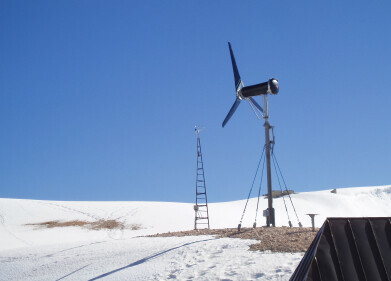Weather Monitoring
How a changing El Niño will impact the Eastern Hemisphere
Apr 26 2024
The El Niño Southern Oscillation (ENSO) is a climate phenomenon known for its significant influence on global weather patterns, including the distribution of rainfall and temperature. Its effects are particularly pronounced in the Eastern Hemisphere, notably in Asia and the Western Pacific region. This article explores recent studies highlighting how changes to ENSO could reshape climate patterns, with a focus on China's agricultural sector, regional weather anomalies, and broader global impacts.
A comprehensive study analyzing the correlation between ENSO events and drought occurrences in China has shed light on how this climatic phenomenon affects regional drought patterns. The research utilized indices like the Standardized Precipitation Evapotranspiration Index (SPEI), Niño3.4, Southern Oscillation Index (SOI), and the Multivariate ENSO Index (MEI) to assess impacts. Findings indicate that the timing and intensity of droughts in regions such as southern China, the Jiangnan area, and the Yangtze River basin closely correlate with ENSO phases. Notably, droughts in these areas typically lag behind the peak phases of El Niño events by up to 12 months when using the Niño3.4 index, with shorter lags noted for stronger events.
Further research has emphasized the critical role of ENSO in agricultural productivity in China, the world's largest food producer and importer. By examining satellite data and ENSO indices alongside grain yield statistics, the study highlighted how El Niño and La Niña events differently influence crop yields at various administrative levels. Interestingly, La Niña phases tend to benefit grain productivity more than El Niño phases. This nuanced understanding aids in enhancing early warning systems for food and agriculture, enabling more targeted responses to climatic shifts induced by ENSO cycles.
Another pivotal study from the Institute of Atmospheric Physics, Chinese Academy of Sciences, delved into how global warming might alter the dynamics of ENSO and its subsequent impact on the East Asian climate. The research focused on the western North Pacific anomalous anticyclone (WNPAC), a key element in linking ENSO events with weather outcomes in East Asia and the Western Pacific. Projections suggest that while some uncertainties remain, changes in the amplitude and decay pace of El Niño could significantly influence the persistence and strength of the WNPAC, thereby affecting rainfall and moisture levels in the region.
The implications of these findings are profound, particularly as they relate to managing extreme weather events and their impacts on agriculture. For instance, an intensified El Niño phase is associated with increased risks of droughts and high temperatures in northern China, which could adversely affect agricultural output and water resources. Similarly, southern parts of China might experience enhanced rainfall, posing challenges for flood management but potentially benefiting rice cultivation.
The effects of ENSO are not confined to the Eastern Hemisphere. Its influence extends globally, affecting climate patterns across continents. As ENSO events become more intense or frequent under global warming scenarios, their impact on global agriculture, water resources, and disaster management will necessitate more robust international cooperation and innovative climate adaptation strategies.
Digital Edition
AET 28.2 April/May 2024
May 2024
Business News - Teledyne Marine expands with the acquisition of Valeport - Signal partners with gas analysis experts in Korea Air Monitoring - Continuous Fine Particulate Emission Monitor...
View all digital editions
Events
Jul 30 2024 Jakarta, Indonesia
China Energy Summit & Exhibition
Jul 31 2024 Beijing, China
2024 Beijing International Coal & Mining Exhibition
Aug 07 2024 Beijing, China
IWA World Water Congress & Exhibition
Aug 11 2024 Toronto, Canada
Aug 25 2024 Stockholm, Sweden and online










.jpg)








